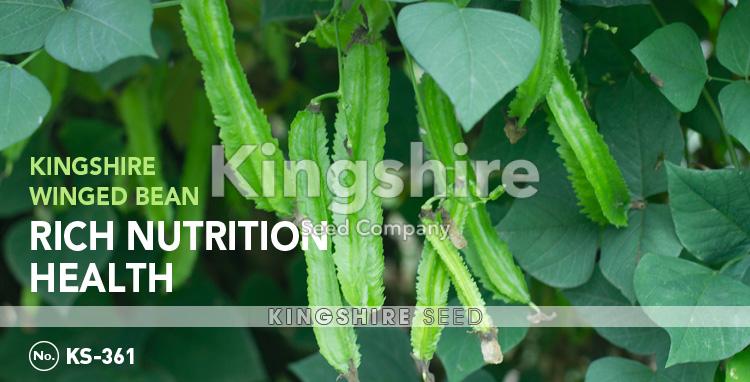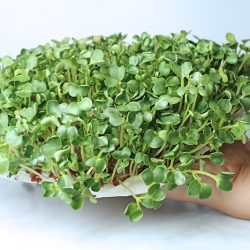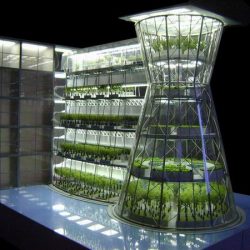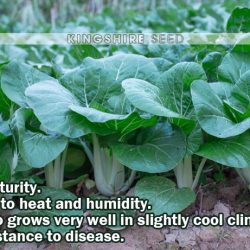Winged bean nutrition facts
Winged beans are one of the versatile edible legumes of tropical origin. The plant is a climber in the Fabaceae family and closely related to the pole beans. Its scientific name is Psophocarpus tetragonolobus ascribing to its fleshy four-angled fruit pod.
Winged bean is one of its own kind of plants since almost all the parts of the plant including immature pods, mature seeds, tender leaves and shoots, flowers and tubers are used in the East-Asian cuisine.
Winged bean is a twining annual vine. It grows with the support of trellis to about 5 meters in length. It grows best under hot, humid tropical belt supplanted with short daylight, enough moisture, and well-drained sandy loam soil. After about 45 days of planting, it bears white, pink or light blue color flowers appear in spikes. Wing shaped, elongated pods appear soon about 60 days after plantation. The pods feature along its entire length frilly edges on its four sides and round to oval shape beans inside.

Health benefits of winged beans
- Tender, immature pods of winged beans are one of the very low-calorie vegetables; 100 g beans carry just 49 calories. Mature winged bean seeds, however, has 409 calories per 100 g and compose relatively high protein content equivalent to that of soybean protein.
- Fresh, young bean pods are one of the finest sources of folates. 100 g beans provide 66 µg or 16.5% of daily requirement of folates. Folate, along with vitamin B-12, is one of the essential components of DNA synthesis and cell division. Adequate folate in the diet around conception and during pregnancy may help prevent neural-tube defects in the newborn baby.
- Fresh winged beans contain quite a good amount of vitamin-C. 100 g beans provide 18.3 mg, or 31% of vitamin-C. Vitamin-C is a powerful water-soluble antioxidant, and when adequately provided in the diet, it helps build immunity against infections, maintain blood vessel elasticity, and offer some protection against cancers.
- Also, winged beans provide adequate amounts of minerals, and vitamins. Some of the essential minerals such as iron, copper, manganese, calcium, phosphorus, magnesium are concentrated in them. Manganeseis utilized in the human body as a co-factor for the powerful antioxidant enzyme, superoxide dismutase.
- Thiamin, pyridoxine (vitamin B-6), niacin, and riboflavin are some of the B-complex vitamins embedded in these beans.
- Winged bean leaves, used as greens, are an excellent source of fiber, vitamin-C, vitamin-A, and minerals. 100 g of fresh leaves provide 45 mg of vitamin-C (75% of recommended daily value) and 8090 IU of vitamin-A (270 % of RDA).
- Wnged bean tubers are notably rich sources of starch, protein, and B-complex vitamins. 100 g of root provides 11.6 g of protein in comparison to 2.02 g/100 g and 1.36 g/100 g protein content in potato, and cassava respectively.
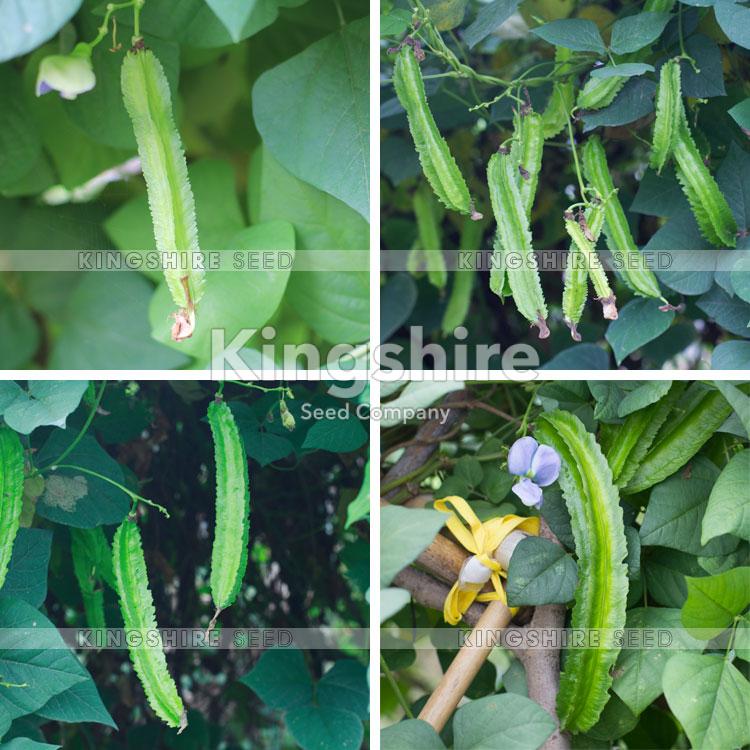
| Principle | Nutrient Value | Percentage of RDA |
|---|---|---|
| Energy | 49 Kcal | 2.5% |
| Carbohydrates | 4.31 g | 3% |
| Protein | 6.95 g | 12% |
| Total Fat | 0.87 g | 3% |
| Cholesterol | 0 mg | 0% |
| Vitamins | ||
| Folates | 66 µg | 16.5% |
| Niacin | 0.900 mg | 6% |
| Pantothenic acid | 0.059 mg | 1% |
| Pyridoxine | 0.113 mg | 9% |
| Riboflavin | 0.100 mg | 8% |
| Thiamin | 0.140 mg | 12% |
| Vitamin A | 128 IU | 4% |
| Vitamin C | 18.3 mg | 30% |
| Electrolytes | ||
| Sodium | 4 mg | <1% |
| Potassium | 240 mg | 5% |
| Minerals | ||
| Calcium | 84 mg | 8% |
| Copper | 0.051 µg | 5.5% |
| Iron | 1.5 mg | 19% |
| Magnesium | 34 mg | 8% |
| Manganese | 0.218 mg | 9% |
| Phosphorus | 37 mg | 5% |
| Selenium | 1.5 µg | 3% |
| Zinc | 0.39 mg | 3% |
Selection and storage
Winged beans can be available in the markets almost all round the year in tropical regions. The beans generally recognized by their local names like “kacang botol” in Malaysia, “kecipir” in Indonesia. Wing bean is also popular with alternative names like asparagus-bean for their delicate asparagus flavor of their young, immature pods. Other names by which these frilly edged beans addressed around the world are as asparagus pea, princess pea, four-angled bean, goa bean, etc. Although this legume has enormous potential as an all-round nutritional solution to alleviate malnutrition problems, its cultivation still limited to small farms and home gardens only.
Besides its young pods, which command higher consumer attention, almost all parts of the bean plant including its crispy leaves, tender shoots, flower blossoms, as well as underground tubers employable in various cuisines.
In the markets, choose tender, immature pods featuring shiny green surface and light green chewy peas inside. Avoid overmature, discolored beans as they tend to have unappetizing flesh and dry seeds inside.
At home, beans should be consumed while fresh to enjoy their natural flavor. Otherwise, store them in the refrigerator like French beans in a plastic bag for up to 4 days.
Preparation and serving methods
Wash the beans thoroughly in cold water and mop dry excess water using a paper towel. Trim the tip ends. Chop the beans diagonally into small sections using a paring knife. Dried winged bean seeds used in the same manner as other peas and dry beans. Shoots and flowers added in stews and stir-fries. Winged beans tuber has a nutty flavor owing to their high protein content. It can be used in stir-fries and stews.
Here are some serving tips:
Tender winged bean pods are a delicacy in almost every household on either side of the equatorial region of South and South East Asian regions. Their sweet, chewy and earthy flavor reminisces that of asparagus.
- The beans are one of commonly featuring ingredients in the Indonesian, Malaysia, Vietnam and Cambodian cooking.
- Finely chopped beans added in salads, stir-fries, and sambal.
- Whole immature pods may be grilled and seasoned with oil, salt, and pepper.
- Winged beans seeds can be eaten roasted or added to stews. Sautéed or steamed, they can be served as a side dish with fish, seafood, and poultry.
- The tender leafy greens and shoots cooked in stews and stir-fries.
Safety profile
Winged beans and plant parts can be safely consumed by all healthy persons without any reservations. However, individuals with known immune-allergy to legumes and in G6PD-enzyme deficiency disease should avoid them.
Winged beans carry oxalic acid, a naturally occurring substance found in some vegetables which may crystallize as oxalate stones in the urinary tract in some people. Therefore, individuals with known oxalate urinary tract stones are advised to avoid eating vegetables belong to Brassica and Fabaceae family. Adequate intake of water is therefore advised to maintain normal urine output in these individuals to minimize the stone risk. (Medical disclaimer).
 English
English
 German
German
 French
French

